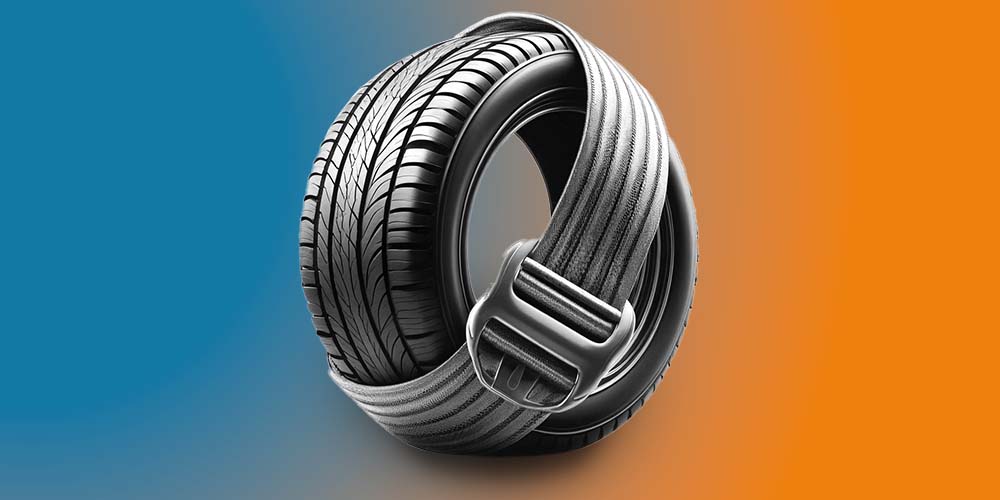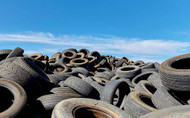BLEM Tires: Are They Worth It?
Posted by Agota Szabo on Apr 25th 2024

BLEM tires can be easily found on the tire market. Retailers sell them at reduced prices and promise the same performance levels as "good-quality" tires. This should make them popular with car owners.
So, why are BLEM tires relatively unknown? Are they worth the price?
Stick with us as we guide you through everything you need to know about BLEM tires!
What Is a BLEM Tire?
BLEM or blemished tires are models that did not pass the strict quality control standards set by manufacturers. Much like other products, tires can be labeled as "BLEM" both for minor and major cosmetic or structural imperfections.
In other words, the manufacturer will mark a tire as "blemished" if it is not up to standards. This can be due to cosmetic imperfections or structural issues. The brand will sell these products at lowered prices, but keep in mind that structural BLEMs should never be sold!
When it comes to cosmetic BLEMs, the imperfection can be anything from damaged white lettering and mismatching letters to a small cosmetic mark on the tire's sidewall.

How Do Tire Manufacturers Produce Blemished Tires?
The goal of tire manufacturers is to not produce blemished tires. However, due to the strict manufacturing standards set in place, brands must set aside cosmetically damaged tires.
When there is a problem or an injury to the tire during manufacturing, it cannot be sold as a first-tier product. This includes even tires that fail cosmetic quality checks. Any deviation from the desired outcome will earn the tire its BLEM status.
In most cases, you will not find factory-blemished tires for sale in their shops. Usually, other tire retailers purchase and sell them at lower prices on the replacement tire market. Find BLEM tires for sale at TireMart.com!
Identifying BLEM Tires Through Quality Control
The tire manufacturer's quality control team plays a huge role in determining if a tire is a BLEM or not. Inspectors do this with both visual inspections and special tools and machinery that give insight into the tires' structures.
Each individual tire has to go through this process and the manufacturer's quality control team has to check everything from tire rubber and tread design to internal construction. There is a need for this rigorous control as faulty tires can easily lead to fatalities.
How Can Tire Inspectors Quality Check Tires?
As mentioned before, issues arising during the manufacturing process can be cosmetic or structural. Visual inspections help you locate a tire with cosmetic problems, as they are more visible to the naked eye.
Problems may arise with the structure as well. This is where machinery comes into play. They use X-ray-type systems that can check for internal issues - like air bubbles in the rubber or damaged constructions.

The Benefits of Buying Blemished Tires
While blemished tires have their downsides, they also offer multiple benefits. Apart from its price, consumers can find different advantages with such tires.
Finding the right tires for your vehicle is important, but it's even better when the tire set you get offers excellent performance and safety at lower prices.
They Are Technically Brand New Tires
Just because a tire is a blemished one doesn't mean that it is a used tire. Blemished tires are new tires, which have cosmetic imperfections on their sidewalls or tread area. Cosmetically blemished tires still provide the same driving safety levels as their first-tier counterparts.
Therefore, brands still sell them at reduced prices. The only issue is that a chance exists that you won't find a full tire set in one shop. Such tires are not available everywhere, online shopping is a good alternative.

All BLEMs Are DOT-Approved
Cosmetic BLEM tires, or blemished tires with cosmetic imperfections, are DOT-approved for on-road use. This is thanks to them still providing the necessary traction, controllability, and driving durability as regular tires.
In other words, tires marked due to stylistic issues do not offer diminished usability. With such issues, shops cannot sell these tire sets as part of the manufacturer's first-tier lineup. Still, their performing capabilities have no issues.
Pay Less and Enjoy the Same Tire Quality
The third benefit ties in with the previous two: buying good quality tires at lower prices. Equip your vehicle with new tires and pay less at the shop. Retailers cannot sell these tires at the same price as tires that passed the quality check, but BLEM tires still offer the same performance.
Therefore, vehicle owners can purchase safe tires at decreased prices!
Now the only question that remains is: Where to buy blemished tires?
Your best bet would be to check an online shop, like TireMart.com. Tires of this caliber often are not available in sets of four in physical shops, as brands strive to minimize their blemished tire production. In online tire shops, you will have a better chance of finding full sets of the same tire model and size.

The Driving Safety and Durability of Blem Tires
Blemished tires still offer the same performance levels as their first-tier counterparts. Cosmetically damaged tires do not lose their performance and driving durability from such aesthetic issues.
For this reason, blemished tires are still able to perform in their intended manner. Blemished winter tires still provide severe winter weather traction, while high performance tires withstand heat build-up during their high speed applications.
Frequently Asked Questions
Are Blemished Tires Safe?
It depends. Blemish tires with cosmetic imperfections offer the same levels of performance and traction as their non-blemished counterparts. However, structurally blemished tires are dangerous. For this reason, online shops can only sell tires with cosmetic imperfections.
What Does BLEM Mean?
Manufacturers mark BLEM or blemished tires as such because they failed the quality control process. This means that they have cosmetic or constructional issues, and as a reason, brands can't sell them as first-tier tires. Vehicle owners can still buy cosmetically blemished tires.
















